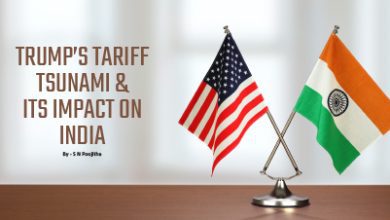IS NFT THE FUTURE OF LAW?

IS NFT (NON-FUNGIBLE TOKENS) THE FUTURE OF INTELLECTUAL PROPERTY LAW?
AND HOW A GIANT FASHION BRAND IS FACING A LEGAL BATTLE OVER PHYSICAL AND VIRTUAL IPR OWNERSHIP
By Adv. Nalini Mishra, Associate Partner, Singhania & Co. LLP & Vice President, India – Austria Business Bilateral Council. WICCI Shaina Khurana, a law intern, 4th year Symbiosis Law School, Noida
As the world is advancing in technologically, it provides us with various opportunities in different sectors of the economy but at the same time creates a gap legally for the proper regulation of such technology in a manner that ensures that the current standard of protection of individual and public rights can be maintained or strengthened. Recently, METAVERSE is one such technological advancement that has created numerous business opportunities but also puta responsibility on the legal fraternity to study its scope and possible means of regulation.
Recently, Metaverse has garnered a lot of attention especially with regards to intellectual property law. Intellectual property law is the branch of law that protects the rights of the creators over their invention, creative work, scientific discovery etc. The common tools of protection of intellectual property rights are trademarks, patents, copyright, geographical indications etc.
The law in the field of intellectual property rights is already quite developed and continues to witness various advancements as a result of globalization and increasing trade in intellectual property.

NFT’s, Blockchain, Cryptocurrency
The concept of metaverse had mostly ever existed in gaming software, le.. you can buy and sell digital assets which then can be shared amongst all its experience components. For example, Counter-Strike gun skin can also be used to decorate a gun in Fortnite or begifted to a friend on/through Facebook.
For business ventures, especially designers, brands, and renowned artists etc., blockchain technology, NFT’s and cryptocurrency plays an important role in creating opportunities for a functioning economy in the metaverse. The actual technology needed to make the virtual reality, an interactive experience is still under developmental stages. However, these three terms are inter-related since NFTs are necessarily based on blockchain technology which facilitates the sale and purchase of cryptocurrencies.
NFT is an application of digital blockchain software that allows for the trade of cryptocurrency as well as digital data within a network of verified computers.
However, recently NFT has also been used to trade creative works of art such as art, music, design, fashion et cetera. These servers provide for an exchange in works of art in the form of digital data of the tangible creative work. This digital data is then attached along with contracts or agreements which denote the ownership over such data. It must be understood that the trade of digital data across the network of computers does not create a right for the buyer to produce physical or tangible copies of such data but to only have it registered under his/her name. Under Copyright Act, section 13 one may conclude that NFTs can provide reasonable protection to the data as it involves storing the data in an electric format Similarly, under section 17 of the Copyright Act, the creator may transfer all the rights to his work to the buyer.
This method of trade of data has been most successful in terms of the entertainment and music industry with many artists wanting to create digital versions of their works of art. One might consider it as a form of alternate intellectual property protection.
This is because once a particular data is registered with the software under a particular ownership, the same cannot be copied or registered in the name of another unless a verified sale of the same takes place in the name of such other person.
A very simple example of this can be that once a digital image is registered on the software under the ownership of person A, any other similar image will be compared with the data of A’s digital image and on finding plagiarism regarding the same will not allow such copied image to be registered on the software.
However, one might say that there is a limitation to such protection as, it will be only limited to the number of computers in the same network at a time, therefore one might create a plagiarized version of the metadata on another server or network of computers.
Many fashion brands have also taken an interest in protecting their designs by creating non-fungible tokens of their designs.
Legal Conflict
The law on NFTs is silent as of now, however, legal conflicts have been arising with the use of NFTs in the trade of digital artwork. In the recent case of Hermès International, et al. v. Mason Rothschild, the brand has filed for an infringement ofits trademark, copyright as well as cybercrime upon a digital artist by the name of Mason Rothschild. The issue arose as a result of Rothschild uploading graphic art of the Hermes Birkin by the name of MetaBerkin on the server which made him the owner to the meta-data linked to the graphic uploaded by him and not the physical bag. However, Hermes claimed it to be an infringement of their trademark and IP rights as the design of the bag was used by Hermes to create its collection and had been associated by the company for a long time. The issue is under a lot of scrutiny as it is believed that it may act as a precedent for the upcoming development in intellectual property laws.
The brand claimed that the owner of the MetaBerkins is trying to infringe the “real life” rights of Hermes with its “virtual rights”.
The brand claimed that NFTs are unique and nonfungible (i.e., non-interchangeable) units of data stored on a blockchain just as cryptocurrencies (which are fungible) are stored on the blockchain. NFTs can be created to transfer ownership of any physical thing or digital media, including an actual handbag or the image of a handbag. NFTs can also be freely bought and sold like any other commodity. As with cryptocurrencies, a highly speculative market has emerged around the trading of NFTs hence earning the artist unaccounted profits.

The case has been filed in the United States District Court Southern District of New York and proceedings are pending. The case is deemed to act as a precedent and plays an important role in shaping the law surrounding the regulation of NFTs and intellectual property rights.
Recently, many brands have been planning to launch their own NFT collections; however, questions arise as to how the legal scenario is going to be affected in such an atmosphere. The fashion industry, in particular, does not rely much on the traditional tools of the intellectual property, mostly depending on trademarks and sometimes copyrights, since the basis of the industry relies on borrowing and getting inspired by the trends and designs already present or in the past and hence rely on mutually agreed upon traditions and norms set up since.
Continuous efforts are underway for the development of the upcoming technological advancements with predictions that the virtual world is created for the humans to interact and thrive in. However, it is equally important that such advancements are afforded equal rights as we all enjoy in the real world.
Work Cited
Bogadkowska, K. (2021, December 6). WebTMS. Retrieved from webtms.com: https://www.webtms.com/race-to-themetaverse-opportunities-and-risks-forbrands-and-ip-rights/
Jackson, C. (2021. December 17). Elle UK. Retrieved from elle.com https://www.elle.com/uk/fashion/a38536774/bi rkin-bag-nift/
Will Garton, F. M.(2021. October). Norton Rose Fulbright. Retrieved from nortonrosefulbright.com: https://www.norfonrosefulbright.com/en/knowl edge/publications/lalabb9f/nfts-andintellectual property-rights#section2






